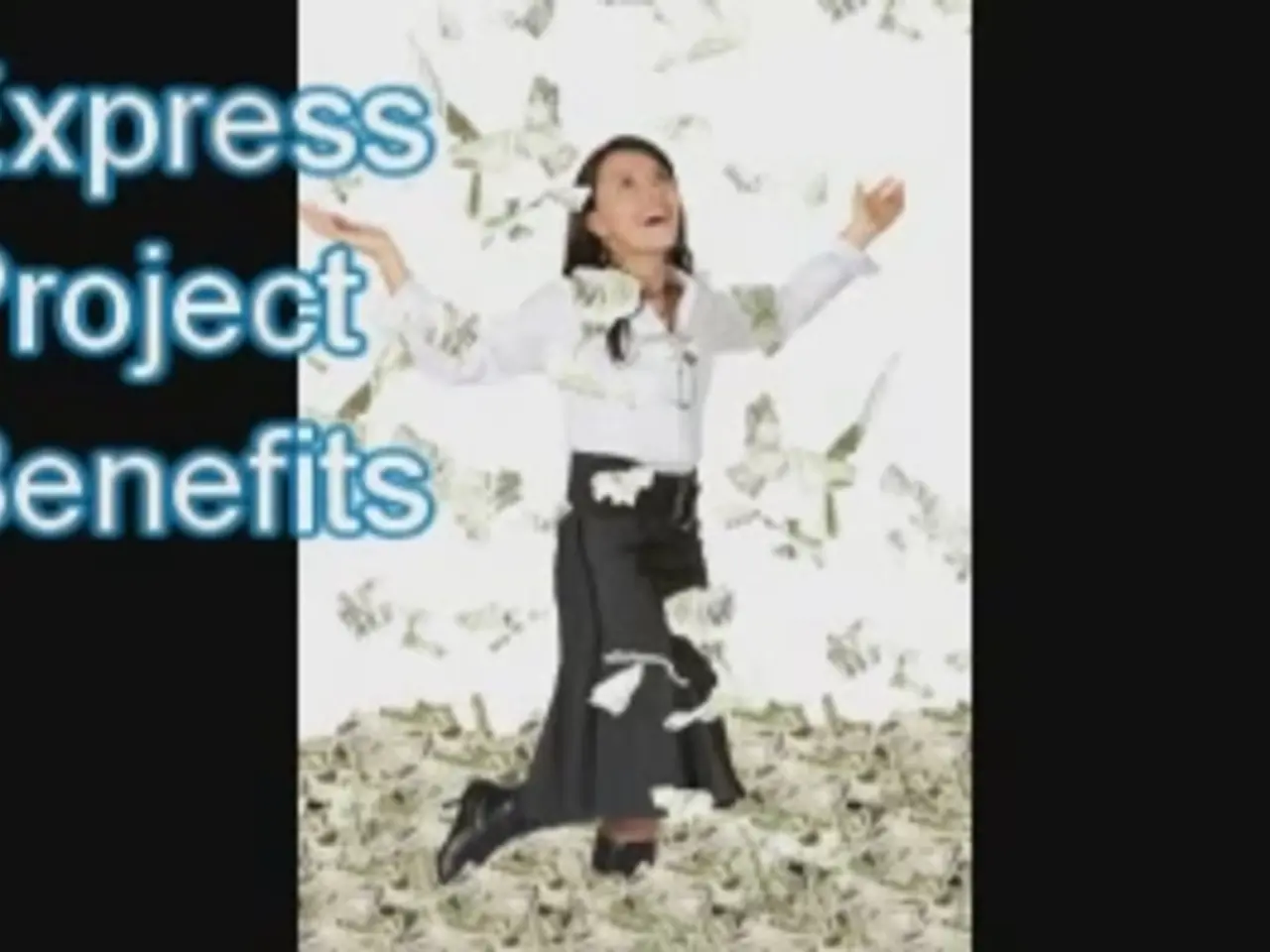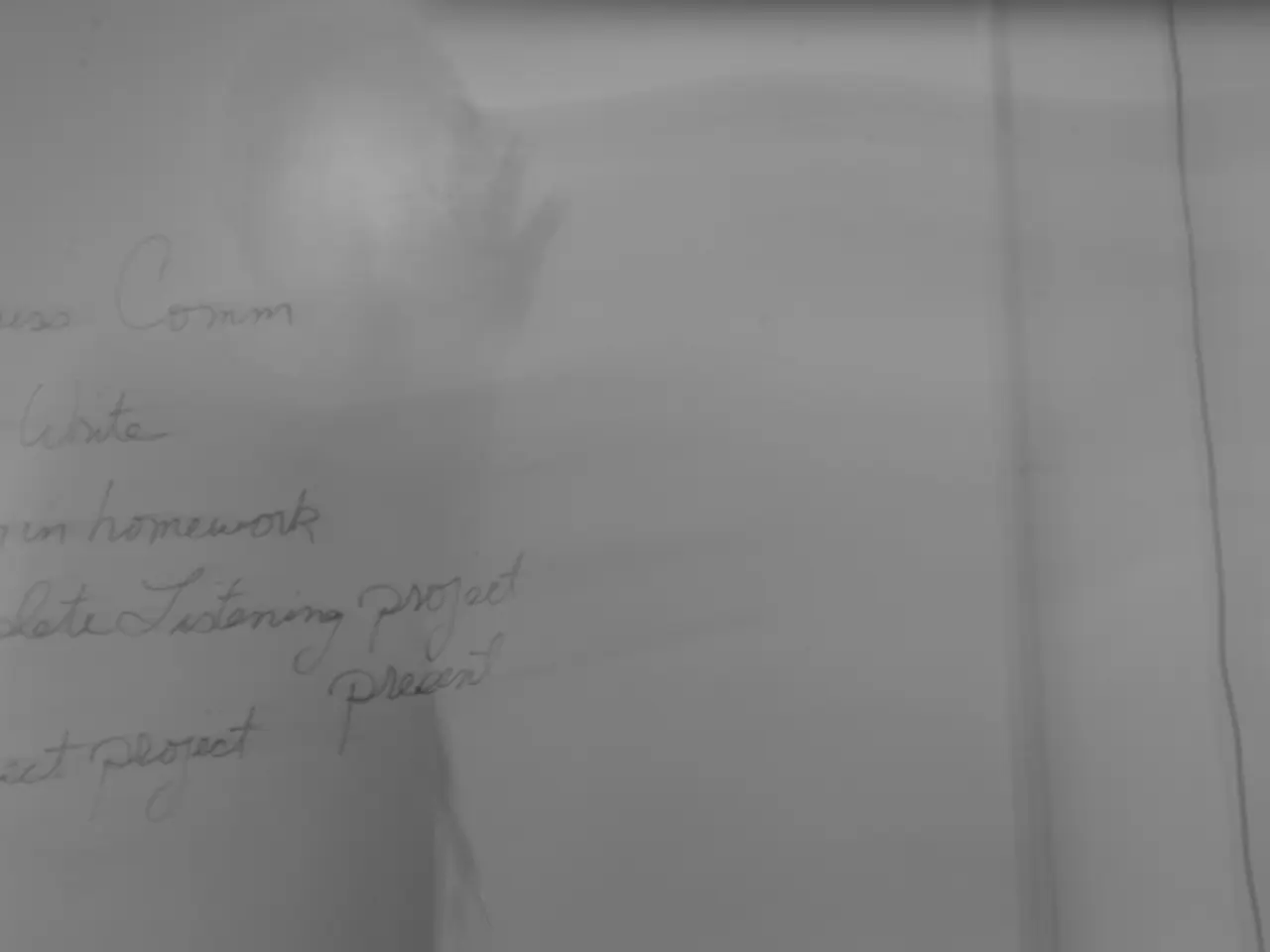Economy Suffering from Persistent Inflation and Stagnant Growth
Let's Talk about the Fed and Their Shady Forecasting
The Fed's June meeting was as dull as dishwater, leaving the markets untouched. They did, however, reveal a big problem: showering us with confusing predictions. The supposed forecasts they released were actually a mishmash of individual FOMC members' guesses, and it's unclear what the average, range, or even median means.
Chairman Powell talks a big game about the economy being in a sweet spot and rates staying low. But take a look at the University of Michigan's Consumer Survey. It shows runaway inflation expectations for the next year and the next five years. And let's not forget the Fed's own SEPS, which anticipate inflation will overshoot the target for the sixth year in a row, leading to more rate cuts. What's the point of a target if you can't even hit it?
So why are people pretending everything's fine? If the Fed is supposed to keep inflation at 2%, why have they missed the target for four straight years and still can't seem to prevent inflation from rising? Even a toothless, disengaged central bank should be able to hit a target this simple, right?
So, what the hell is going on here? This policy is starting to look like one big farce. Rather than taking responsibility and correcting their mistakes, the Fed keeps pulling stunts like this, leaving us scratching our heads. If anything, these convoluted forecasts highlight the Fed's lack of commitment to a simple, straightforward target – usually the unemployment rate.
During Covid, the Fed lost grip of inflation and tried to weasel out by claiming it was temporary. Some economists said the Fed should ignore supply shocks and not react to them. But that didn't work; inflation spread across sectors and the Fed ended up chasing it with devastating rate hikes. Are they ready to repeat the same mistake?
Groundhog Day Economics
Now the Fed's prepared to cut rates again, even though inflation is still above the target and more price pressures loom from tariffs and oil prices. But if the Fed messes up here, these temporary pressures could turn into a full-blown inflation problem. Meanwhile, the threat of ballooning fiscal deficits casts an ominous shadow.
The Fed needs to stay aware of the situation and adjust its policy accordingly. Unfortunately, the policy they've planned looks more like a recipe for disaster than a careful approach from a worried inflation fighter.
Stagflation City
The danger now is rising inflation and the emergence of stagflation – a miserable state of high inflation and slow growth. Stagflation is tricky to shake off; it often evolves from a failed "soft-landing" attempt. The Fed has been downplaying its inflation misses and stubbornly refusing to raise unemployment. This stubbornness could lead to overheating the economy and failing to reduce inflation, causing stagflation.
The Fed's outlook sees rate cuts in its future, even though they'll raise inflation expectations, fueling potential stagflation. Not only do tariffs and oil prices pose threats, but mounting fiscal deficits also increase inflation expectations – making the case for stagflation a slam dunk, with no imagination required.
Blind as a Bat, Deaf as a Post
I've been warning about the risks of soft-landing policies for a while now. These policies have never succeeded in keeping the unemployment rate low, lowering inflation, and returning inflation to pre-acceleration levels. The most recent quasi-soft-landing did drop unemployment, sending inflation soaring past 9%; it's now between 2.5% and 3%, still far from the 2% core PCE target. And now, further acceleration is on the horizon. Folks, are we really supposed to believe markets will be content to see Fed rates unchanged as inflation rises? Do markets have Alzheimer's or something?
Through the Looking Glass
The Fed seems lost in a world I don't recognize. Their priorities are puzzling, as is their lack of focus on learning from past mistakes. This stubbornness to repeat the same risks from a few years ago is alarming. And their belief in "anchored" inflation expectations is beyond me.
Inflation is the Root of All Evil
The Fed calls its policy "mildly restrictive," but will it still be "mild" when inflation flares up again? Moreover, is anyone aware that the Fed's "higher-for-longer" policy has increased debt financing costs? The only way to reduce those costs is to lower rates – but not by cutting the federal funds. Perhaps by raising them! To get inflation in check and keep rates at bay, lowering debt financing costs, the Fed needs to focus on reducing inflation instead of trying to juggle a failed dual mandate with soft-landing policies.
Responsible for this mess? The Fed. No wonder markets seem calm; they've grown accustomed to economic chaos as the Fed fumbles its policy and sets us up for stagflation.
Some Enrichment Nuggets:
You've heard about the median dot on the Fed's dot plot, but what exactly does it tell us? It represents the midpoint prediction of interest rates from FOMC members at the end of each calendar year. Rising median dots signal tighter monetary policy to control inflation and falling median dots indicate expectations of rate cuts or easing. A declining median dot when inflation is above the target can impact the Fed's credibility.
Sources:
[1] Board of Governors of the Federal Reserve System. (n.d.). Federal funds target rate. Retrieved from https://www.federalreserve.gov/monetarypolicy/fomccalendars.htm
[2] Financial Times. (2019, June 19). What does the Fed’s ‘dot plot’ tell us? Retrieved from https://www.ft.com/content/b720a1c6-a86d-11e9-a6d9-23f125b98a15
[3] Federal Reserve Bank of St. Louis. (2020, June). FOMC participants' summary of economic projections (long-run projections). Retrieved from https://fred.stlouisfed.org/rec/series/FEDFED
[4] Goodfriend, M. (2023, March 1). The Fed, Inflation Targeting, and Sectoral Misalignments. NBER Working Paper No. 30031. Retrieved from https://www.nber.org/papers/w30031
[5] Congressional Research Service. (2018, November 28). The Federal Reserve's Monetary Policy Tools: A Primer. Retrieved from https://crsreports.congress.gov/product/pdf/R/R44871
- In light of the Fed's persistent failure to hit their inflation target of 2%, the credibility of their policy-and-legislation regarding finance and general-news is under question, as evidenced by the declining median dot on the Fed's dot plot when inflation is above the target.
- Amidst rising inflation and the threat of stagflation, the Fed's focus on soft-landing policies appears misguided, especially in the face of fiscal deficits, tariffs, and oil prices that are fueling inflation expectations – a situation that calls for a shift from the current mildly restrictive policy to one that effectively manages inflation, instead of trying to juggle the failed dual mandate.




